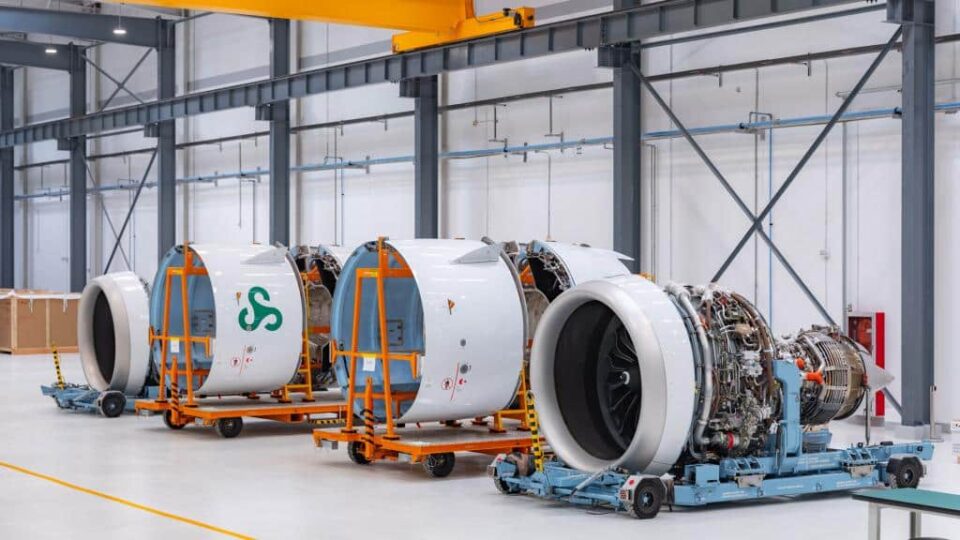Airlines
Safran delivers LEAP-1A propulsion systems to China

After Toulouse (France), Hamburg (Germany), and Mobile (Alabama, USA), Tianjin serves as Safran’s fourth nacelle integration location. It symbolizes Safran’s ambition to be as near as possible to its aircraft manufacturer clients in order to support the expansion of the Chinese market and is situated in the Tianjin Free Zone next to Airbus’ A320neo Final Assembly Line.
First A320neo assembled in Tianjin delivered to AirAsia(Opens in a new browser tab)
With a total surface area of 5,000m2 (53,820ft2), the new Tianjin site is intended to consolidate all nacelle integration operations on Airbus A320neo’s CFM International* LEAP-1A engines: assembly of engine equipment (Engine Build Up – EBU) and nacelle components (air inlet, engine cowl, thrust reverser and exhaust nozzle), painting, buy off by Airbus and the airlines, then delivery to Airbus’ FAL and support for on wing integration. The site will employ between 15 and 20 qualified employees and will deliver 90 propulsion system units per year from 2024.
The Tianjin plant is outfitted with a “Flex Line” workshop, allowing operations to be carried out either in a “Pulse Line” mode or as a fixed station according to Airbus‘ demands. This builds on the expertise of Safran Nacelles’ existing integration locations. Therefore, some engines can be directed there without slowing down the output of other propulsion systems in a secondary flow zone intended for FAL support activities.
Airbus starts A321 aircraft production in China’s Tianjin(Opens in a new browser tab)
The chief executive officer of Safran Nacelles, Vincent Caro, said that this new facility “is a showpiece of Safran Nacelles’ know-how in the integration of propulsion systems. In terms of industrial organization and skills, it gains from network of integration sites’ best practices.

Airlines
Sanctions & Engine Issues Ground Half of Russia’s A320neo fleet

Russia’s aviation sector, already strained by Western sanctions, faces another setback as nearly half of its Airbus A320neo family aircraft are grounded due to unresolved engine issues.
This development highlights the growing challenges for russia commercial aircraft in maintaining their fleets under the weight of global restrictions and limited access to spare parts.
Out of the 66 Airbus A320neo and A321neo jets in Russia, 34 are now out of service, according to the Kommersant business newspaper. These planes are powered by engines manufactured by Pratt & Whitney, a subsidiary of RTX Corporation.
DAMAC Air: Dubai’s New Luxury Airline Offers Free Flights for Registration
The engines are affected by a previously identified defect in the metal used for certain parts, prompting accelerated inspections and maintenance.
Sanctions have compounded the issue, blocking the supply of essential components from major manufacturers like Boeing and Airbus. Without proper maintenance, experts warn that these aircraft may face decommissioning as early as 2026.
COMAC Unveils Plans for the C929 to Rival Airbus and Boeing
Airlines like S7, which operates a significant portion of these grounded jets, plan to conserve the engines for future use during peak travel seasons. However, reports suggest that over 20 of S7’s Airbus planes have engines that have already reached the end of their operational lifespan. Recently, russia seeks assistance from kazakhstan’s airlines to bolster its domestic flights.
While some A320neo and A321neo planes in Russia are equipped with French-made LEAP engines, which are seen as less problematic, the challenges remain daunting.
The situation underscores the long-term impact of sanctions on Russia’s aviation sector and the increasing difficulties in keeping its modern fleets operational.
-

 Aviation2 months ago
Aviation2 months agoMicrosoft Flight Simulator Raises $3 Million to Bring Back the An-225 Mriya
-

 Airlines2 months ago
Airlines2 months agoQantas Engineers Stage Walkout Over Cost of Living Concerns
-

 Airlines2 months ago
Airlines2 months agoQatar Citizens Can Travel to the United States Without a Visa
-

 Aviation2 months ago
Aviation2 months agoQatar Airways bans these new Electronic Devices on plane
-

 Airlines2 months ago
Airlines2 months agoJapan Airlines Rolls Out Free Domestic Flights to International Passengers
-

 Defence2 months ago
Defence2 months agoWhich Country Has the Largest Fleet of Fighter Aircraft?
-

 Airport2 months ago
Airport2 months agoWestern Sydney Airport Welcomes Its First Plane After 6 Years of construction
-

 Aviation2 months ago
Aviation2 months agoDid you know ? Once Boeing 747 carried 1088 passenger in 1991








